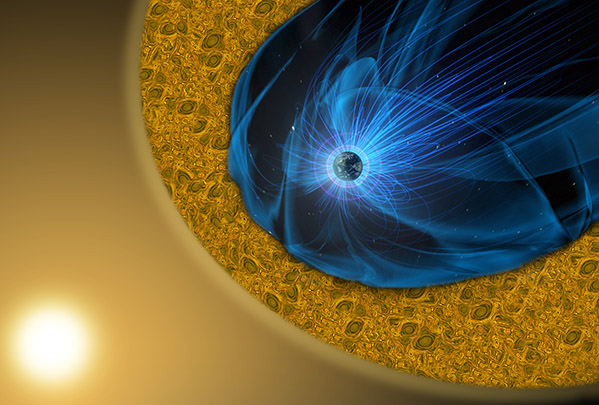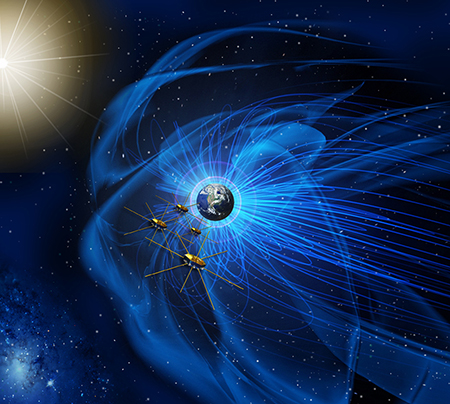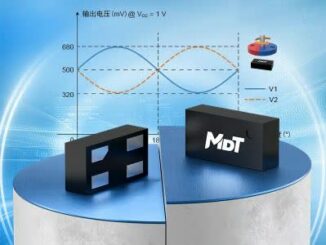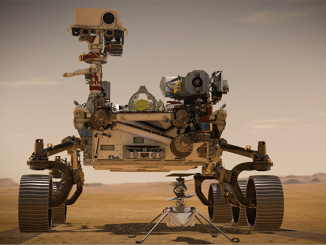
In a new discovery reported in the journal, Nature, scientists working with NASA’s Magnetospheric Multiscale Spacecraft (MMS) uncovered a new type of magnetic event in our near-Earth environment by using an innovative technique to squeeze extra information out of the data.
Magnetic reconnection is one of the most important processes in the space filled with charged particles known as plasma around Earth. This fundamental process dissipates magnetic energy and propels charged particles, both of which contribute to a dynamic space weather system that scientists want to better understand, and even someday predict, as we do terrestrial weather. Reconnection occurs when crossed magnetic field lines snap, explosively flinging away nearby particles at high speeds. The new discovery found reconnection where it has never been seen before; in turbulent plasma.
“In the plasma universe, there are two important phenomena: magnetic reconnection and turbulence.” said Tai Phan, a senior fellow at the University of California, Berkeley, and lead author on the paper. “This discovery bridges these two processes.”
Magnetic reconnection has been observed innumerable times in the magnetosphere, the magnetic environment around Earth, but usually under calm conditions. The new event occurred in a region called the magnetosheath, just outside the outer boundary of the magnetosphere, where the solar wind is extremely turbulent. Previously, scientists didn’t know if reconnection even could occur there, as the plasma is highly chaotic in that region. MMS found it does, but on scales much smaller than previous spacecraft could probe.

MMS uses four identical spacecraft flying in a pyramid formation to study magnetic reconnection around Earth in three dimensions. Because the spacecraft fly incredibly close together at an average separation of just four and a half miles, they hold the record for closest separation of any multi-spacecraft formation. They are now able to observe phenomena no one has seen before. Furthermore, MMS’ instruments are designed to capture data at speeds a hundred times faster than previous missions.
Even though the instruments aboard MMS are incredibly fast, they are still too slow to capture turbulent reconnection in action, which requires observing narrow layers of fast-moving particles hurled by the recoiling field lines. Compared to standard reconnection, in which broad jets of ions stream out from the site of reconnection, turbulent reconnection ejects narrow jets of electrons only a couple miles wide.
“The smoking gun evidence is to measure oppositely directed electron jets at the same time, and the four MMS spacecraft were lucky to corner the reconnection site and detect both jets,” said Jonathan Eastwood, a lecturer at Imperial College, London, and a co-author of the paper.
Crucially, MMS scientists were able to leverage the design of one instrument, the Fast Plasma Investigation, to create a technique to interpolate the data essentially allowing them to read between the lines and gather extra data points in order to resolve the jets.
“The key event of the paper happens in only 45 milliseconds. This would be one data point with the basic data,” said Amy Rager, a graduate student at NASA’s Goddard Space Flight Center in Greenbelt, Maryland, and the scientist who developed the technique. “But instead we can get six to seven data points in that region with this method, allowing us to understand what is happening.”
With the new method, the MMS scientists are hopeful they can come back through existing datasets to find more of these events, and potentially other unexpected discoveries as well.
For more information, visit: https://www.nasa.gov/



